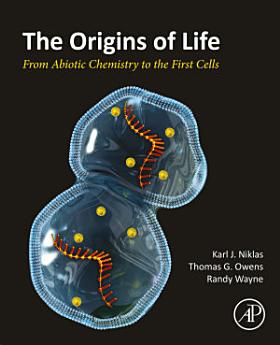The Origins of Life: From Abiotic Chemistry to the First Cells
Apr 2025 · Academic Press
Ebook
300
Pages
family_home
Eligible
info
reportRatings and reviews aren’t verified Learn More
About this ebook
The Origins of Life: From Abiotic Chemistry to the First Cells is an essential textbook that tackles one of the greatest mysteries in science, how inanimate matter evolved into the first living things. The book takes an interdisciplinary approach, delving into the basic principles of the earth's chemistry, the formation of pre-cellular entities, and the acquisition of chemical complexity. It explains the creation of chromosomes, metabolic pathways, and the features of the earliest prokaryotes. Users will find a detailed exposition of the World RNA Hypothesis in an accessible and easy-to-read style which is comprehensible for both science and non-science majors.This textbook is a critical resource for upper-level undergraduate students in Cellular Biology, specifically those studying or researching evolution, cellular chemistry, and pre-biotic chemistry, as well as non-science majors in courses on the philosophy of science or related topics. It is also useful for professionals in biochemistry, evolutionary biology, and astrobiology who wish to understand the origins of life and first cells. Science communicators could use this interdisciplinary textbook for teaching and dissemination to broader audiences as well. - Functions as a readable and instructive book on the evolution of life - Offers a deep dive into the first principles of the physical sciences - Explores, in detail, the emergence of life from inanimate matter - Presents the RNA World Hypothesis in considerable depth
About the author
Karl Niklas is an emeritus professor at Cornell University. He is the author of five books, and has taught classes ranging from Introductory Biology, Introductory Botany, Evolution, and Biomechanics. His research has focused on the application of engineering principles and physics to understand biology and evolution.Tom Owens is an emeritus professor at Cornell University. Over the course of his career, he taught classes that spanned the range from Introductory Biology through the physiology, biochemistry, and biophysics of plant processes. His research encompassed the physiology and molecular biophysics of photosynthesisRandy O. Wayne is a plant cell biologist at Cornell University notable for his work on plant development. In particular, along with his colleague Peter K. Hepler, Wayne established the powerful role of calcium in regulating plant growth; accordingly, their 1985 article, Calcium and plant development, was cited by at least 405 subsequent articles to earn the "Citation Classic" award from Current Contents magazine and has been cited by hundreds more since 1993. He is an authority on how plant cells sense gravity through pressure, on the water permeability of plant membranes, light microscopy, as well as the effects of calcium on plant development. He has published over 50 articles and is the author of another book, Light and Video Microscopy.
Rate this ebook
Tell us what you think.
Reading information
Smartphones and tablets
Install the Google Play Books app for Android and iPad/iPhone. It syncs automatically with your account and allows you to read online or offline wherever you are.
Laptops and computers
You can listen to audiobooks purchased on Google Play using your computer's web browser.
eReaders and other devices
To read on e-ink devices like Kobo eReaders, you'll need to download a file and transfer it to your device. Follow the detailed Help Center instructions to transfer the files to supported eReaders.







